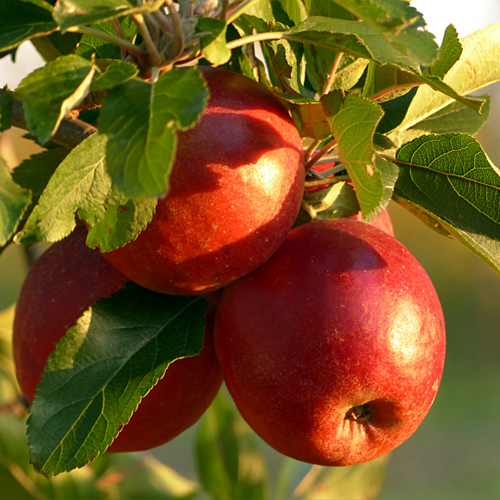Long underestimated and misdiagnosed, endometriosishas been the subject of increasing attention for several years now. Many women suffering from endometriosis found themselves marginalized for a very long time because of the difficulty of this diagnosis. However, according to the Ministry of Solidarity and Health, 10% of women of childbearing age in the world are affected by endometriosis and this affects 1.5 million women in France . These figures underline the fact that endometriosis is a very widespread disease and the public health problems associated with it should not be overlooked.
What is endometriosis?

Endometriosis is a complex chronic gynecological disease characterized by the abnormal presence of endometrial tissue, also called uterine tissue, outside the uterus. During the menstrual cycle of women suffering from endometriosis, cells from the uterine lining (endometrium) migrate and implant themselves in other organs of the body. Most of the time, these tissues are located near the uterus, mainly in the ovaries, uterine tubes, bladder, intestines, kidneys, or even other more distant organs such as the lungs or the liver . When endometrial cells migrate into the muscle of the uterine wall (myometrium), we then speak of adenomyosis.
Since endometriosis lesions have the same characteristics as the endometrium, the latter are also sensitive to hormonal variations, which explains why endometriosis is called an estrogen-dependent disease . During each menstrual cycle, in response to hormonal fluctuations, these tissues bleed which causes an inflammatory reaction, chronic pain, damage and scar formation. This disease manifests itself in women of childbearing age, from puberty , and generally disappears after menopause . The exact cause of this abnormal migration of endometrial tissue remains largely unknown .
Forms of endometriosis
According to the High Authority for Health and the National College of Gynecologists and Obstetricians of France (CNGOF), endometriosis is classified into three forms : superficial endometriosis, ovarian endometriosis and deep pelvic endometriosis. Don't panic, we'll explain everything to you!
1 - Superficial endometriosis
Also called peritoneal endometriosis , this form of endometriosis is the most common . Endometrial lesions are located on the surface of the peritoneum , a membrane lining the interior walls of the abdomen, as well as on the organs present in the abdomen. These superficial lesions can cause, among other things, pelvic pain, pain during sexual intercourse (dyspareunia) as well as abnormal bleeding.
2 - Ovarian endometriosis
This form of endometriosis, also called “endometrioma,” is characterized by the formation of blood-filled cysts on the ovaries . This can lead to an enlarged ovary, severe pelvic pain, pain during periods (dysmenorrhea) and fertility problems.
3 – Deep pelvic endometriosis
Deep pelvic endometriosis is characterized by endometrial lesions infiltrating deeply, that is to say more than 5 millimeters below the peritoneum . These lesions can particularly be located in the rectum, colon, bladder or even in the uterosacral ligaments. This form of endometriosis can cause intense pain during periods, rectal or intestinal pain during bowel movements, pain during sexual intercourse, urinary problems or even fertility problems.
It is important to emphasize that these forms of endometriosis can coexist in the same person. Additionally, endometriosis can also affect rarer sites, such as the lungs, upper urinary tract, or other organs distant from the uterus.
5 treatments to naturally relieve endometriosis pain
Discover now 5 natural treatments to relieve your pain linked to endometriosis and thus take control of your well-being.
1 - Anti-inflammatory diet, to relieve endometriosis
Consuming foods that reduce inflammation within our bodies can help ease endometriosis-related pain and reduce discomfort levels.
- Colorful fruits and vegetables , such as citrus fruits, berries, and greens, which are rich in antioxidants
- Legumes , such as beans or lentils, which are sources of fiber and plant protein
- Whole grains , such as quinoa or oats, which contain fiber and complex carbohydrates
- Nuts and oilseeds , such as almonds, cashews or even flax seeds which are rich in omega 3
In addition, some studies suggest that certain food supplements, such as omega-3 fatty acids, probiotics or even curcumin, could have beneficial anti-inflammatory effects for women with endometriosis.
Pro-inflammatory foods:
On the other hand, it is important to limit the consumption of pro-inflammatory foods such as processed and fried foods high in trans fats and saturated fatty acids; red meats and cold meats which contain saturated fats; high-fat dairy products; foods high in refined sugar and simple carbohydrates; foods containing gluten for sensitive or intolerant people; alcoholic drinks and sugary drinks.
2 - Adapted physical activity, to improve your daily life with endometriosis
Although it may seem counterintuitive when suffering from pain associated with endometriosis, regular exercise can provide many benefits and help improve your daily life. Indeed, it promotes blood circulation, reduces inflammation, strengthens muscles and improves mood. When choosing physical activity, it is important to opt for low-impact exercises, such as walking, swimming, yoga or Pilates. These activities are gentle on the joints and muscles, while providing significant benefits for the body and mind. Remember to consult your healthcare professional before starting an exercise program and adapt it according to your abilities and symptoms.
3 - Phytotherapy, to counter the pain associated with endometriosis
Medicinal plants can offer anti-inflammatory and analgesic properties, helping to alleviate pain. Among those commonly used in herbal medicine for endometriosis are: turmeric, ginger, chamomile, St. John's wort and yarrow. These plants can be consumed in the form of herbal teas, food supplements or integrated into your daily diet. However, be aware that it is important to consult a health professional specializing in herbal medicine to obtain personalized advice and use these plants safely.
4 - Aromatherapy, essential oils for endometriosis
Certain essential oils are known for their anti-inflammatory, analgesic and hormonal regulating effects. Among the essential oils most used for endometriosis, we find: lavender, Roman chamomile, geranium and clary sage. These essential oils can be used topically, diluted in a vegetable oil, or diffused into the air to benefit from their aromatic benefits. However, as with herbal medicine, it is essential to consult a qualified aromatherapist before using essential oils, as they are powerful and should be used carefully, following recommended dosages.
5 - Osteopathy, to relieve the pain of endometriosis
If you suffer from endometriosis, know that osteopathy is a personalized complementary therapeutic approach that can offer you significant relief. This gentle, non-invasive method focuses on restoring balance and harmony in your body by working on the mobility of tissues, organs and musculoskeletal structures. By treating the tension, adhesions and imbalances associated with endometriosis, it helps reduce inflammation, relieve pelvic pain and improve the overall functioning of your body.
DIJO products to naturally relieve endometriosis
Taking care of your intestinal microbiota is essential for all women with endometriosis since this inflammatory disease is often associated with dysfunction of the immune system, including that of the digestive system. And that's where DIJO products come in, offering a natural approach to relieving the symptoms of endometriosis.













